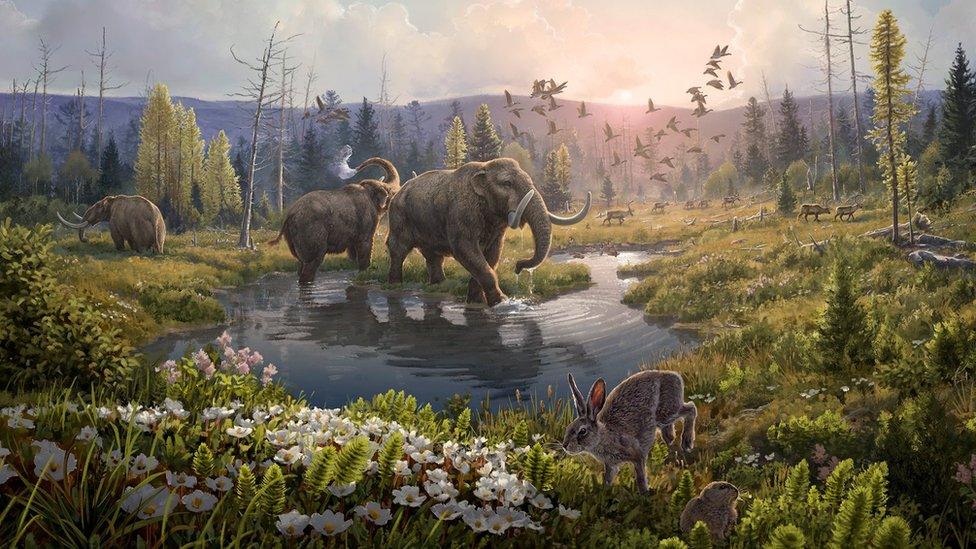Ancient DNA reveals what the Arctic was like two million years ago
- Published
- comments

Researchers found traces of plants and animals that lived in the north of Greenland two million years ago!
What was the Arctic like two million years ago?
From evidence of giant elephant-like creatures called Mastodons wandering about, to deer and even crabs, scientists have been studying ancient environmental DNA (or eDNA) which was found in the soil in a polar desert in North Greenland.
The eDNA also revealed that North Greenland used to be much warmer than it is now.
The average yearly temperatures in Greenland today can range from -50C in winter, to around 16C in the summer, but two million years ago they were around 11-19C hotter.
But just how did Professor Eske Willerslev and his team unlock the secrets found in the ancient DNA? Find out below...
What is DNA sequencing?
The team was not sure if DNA would survive for so many years
The team used something called DNA sequencing to study 41 different soil samples, which they collected from the Kap K酶benhavn Formation in Greenland in 2006 and 2007.
Sequencing is when scientists take a closer look at the structure of the four chemical building blocks - called bases - in DNA.
The order that they are in tells scientists the kind of genetic information they need to know to figure out where the DNA comes from, like if it is a plant or animal, and which species - a bit like a LEGO instruction kit.
This technique is incredibly useful, for example, studying the DNA found in a drop of sea water can reveal all of the creatures that have lived in a patch of ocean, even if you can't see the individual animals yourself.
The two-million year old eDNA the scientists studied from Greenland is the oldest to ever be sequenced!
You might be thinking, but hang on, what about 200 million year-old dinosaurs? Have they not had their DNA sequenced? Well no, and there's a reason.
DNA stands for deoxyribonucleic acid.
It is a chemical made up of two long molecules, arranged in a spiral.
We call this the double-helix structure.
In a double helix, there are four chemical bases which join together to form base pairs.
They are: Adenine (A) which always pairs with thymine (T) and cytosine (C) which always pairs with guanine (G).
DNA carries genetic information. It has all the instructions that a living organism needs to grow, reproduce and function.
DNA is not very strong, and the bonds that hold it together are weak, meaning over time they break down into smaller and smaller pieces, which make it very difficult to piece back together in the right order.
DNA is a bit like a story book, if you have all the pages you can understand the story, but if you're missing a few or a lot of pages you won't be able to tell what the story was about.
As the last dinosaurs died out around 66 million years ago, sadly their dino DNA has broken down too much to be sequenced.
The soil samples were collected from a polar desert in northern Greenland
Professor Willerslev was surprised at how long the Greenland eDNA survived: "I wrote a paper in 2005, where I said I thought DNA would not survive for more than a million years, and here we are with DNA that's two million years old." he said.
He thinks a chemical reaction between the DNA and the soil slowed down the breaking down process.
If more eDNA is found to have survived at other sites, the discovery could change the way we view the ancient world.
"The possibilities are endless." Professor Willerslev said in a statement.
- Published11 January 2018
- Published25 June 2021
- Published19 June 2022
